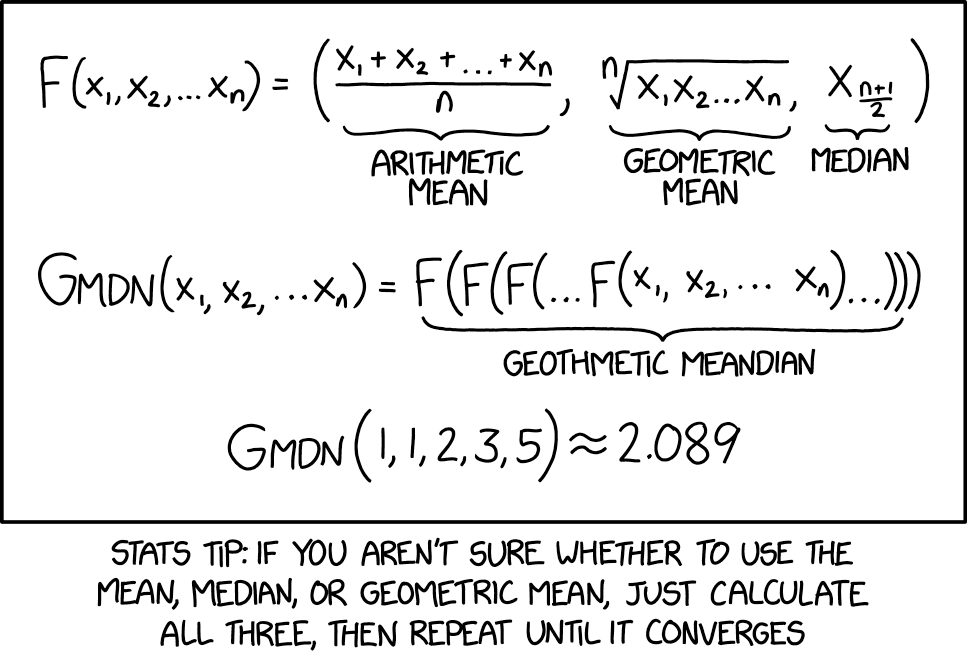A new norm
« previous post | next post »
A recent xkcd suggests the geothmetic meandian:
Mouseover title: "Pythagorean means are nice and all, but throwing the median in the pot is really what turns this into random forest statistics: applying every function you can think of, and then gradually dropping the ones that make the result worse."
So geothmetic is obviously a blend of "geometric" and "arithmetic" (the first two of the Pythagorean means). And "meandian" is obviously a blend of "mean" and "median", and therefore should be pronounced /ˈmin.di.ən/ — but I read it first as /miˈæn.di.ən/, like a blend of "meander" and "median", and I like that better.
Also, I'm not sure why Randall didn't include the harmonic mean in the function — maybe just to make the graphics and the morphology simpler? [Update — Or because he started by knowing that the arithmetic-geometric mean would converge, as pointed out by MattF in the comments, and decided that adding the median would be a good joke?]
Here's an R script that illustrates the process on 10 random values, with the outputs from half a dozen runs, showing convergence within a dozen iterations or so. You can try adding the harmonic mean and see what happens…

MattF said,
March 15, 2021 @ 5:24 pm
It might not be common knowledge that the arithmetic-geometric mean is a real thing, used to compute elliptic integrals:
https://en.wikipedia.org/wiki/Arithmetic–geometric_mean
Jerry Friedman said,
March 15, 2021 @ 6:28 pm
Maybe another reason for leaving out the harmonic mean is that the median of three quantities is more satisfying than the median of four quantities. OK, I grudgingly admit that may be a matter of taste.
Robert said,
March 18, 2021 @ 6:25 am
The numbers used in the example are the first five terms of the Fibonacci sequence.